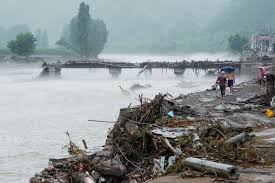China had built a huge base at the Ladakh standoff point, was fully prepared for the battle, satellite image revealed

New satellite images accessed by NDTV confirm that Chinese troops have retreated 3 km from their positions across the Line of Actual Control at Gogra-Hot Springs in eastern Ladakh. The withdrawal is part of a mutual disengagement process that prompted the Chinese military to withdraw from the area where the Indian Army patrolled in 2020.
Before and after images available to NDTV by satellite imagery specialist Maxar focus only on Chinese positions and do not show the boundary of the buffer-zone, or no-man’s land, created between the armies of the two sides as part of the agreement Huh. No patrolling is allowed in this area as a confidence-building measure.
A pre-disruption image from August 12, 2022 shows the Chinese military constructed a large building near an area across the Line of Actual Control, where the Indian Army patrolled across the LAC before the Chinese incursion in 2020 . was surrounded by trenches.
A photo from September 15 indicates that the Chinese have demolished the building and that construction debris has been moved north from the site to a temporary position. Another image shows the landform at the site vacated by China has been restored on the lines of the dissolution agreement announced by both sides.
Local councilors in Ladakh have said that part of the agreement included the Indian Army thoroughly removing its own bases within Indian territory. However, this has not been confirmed by the army officials in New Delhi.
Chushul councilor Konchok Stanzin said, “Our soldiers have gone back not only from Patrol Point 15 (PP-15) but also from Patrol Point 16 (PP-16), which we had for the last 50 years. It was a big blow. Our pastures have now become a buffer zone. It was the main winter pasture.
Gogra broke up between the Indian and Chinese forces after the 16th round of talks between military officers from both sides of the ranks of Corps Commander on July 17 this year. According to the Ministry of External Affairs, “It has been agreed that all temporary structures and other associated infrastructure created by both sides in the area will be dismantled and mutually verified.” The landforms in the area will be restored to the pre-standoff period by both sides.” New satellite images confirm this has happened.

The dismemberment in Gogra, which was completed on September 12, four days after it began, has given rise to speculation about the possibility of talks between Prime Minister Narendra Modi and Chinese President Xi Jinping in Samarkand, Uzbekistan over the past two days. While the two leaders shared the stage at the Shanghai Cooperation Organization (SCO) meeting. This was their first meeting after the Galwan conflict of May 5, 2020. Before this he never shook hands nor held any formal or informal conversation.
Mutual isolation and creation of a buffer zone has proved to be the only way to bring China back across the Line of Actual Control. Whereas this means that the deadlock has been broken in 4 areas, where the Chinese have crossed. It is also clear that these buffer zones have been created within Indian territory, where the Indian Army or the Indo-Tibetan Border Police (ITBP) can no longer patrol.
It is believed that the Chinese army continues to block Indian patrol posts in the Depsang plains north of Gogra. The dissolution talks have not made progress here so far.






